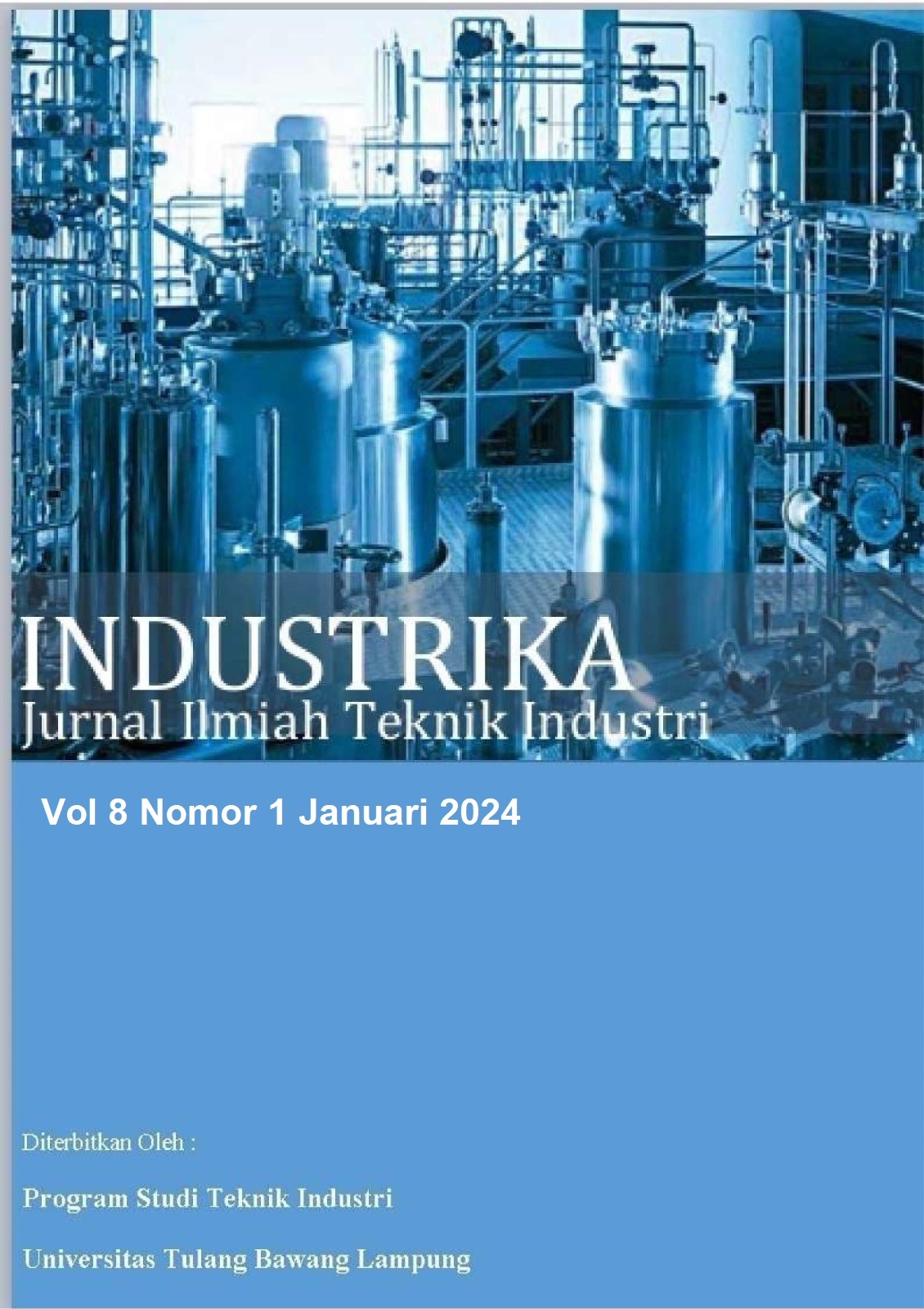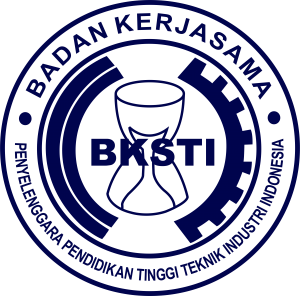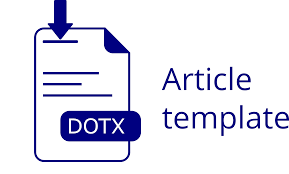Analisis Perbaikan Posisi Kerja di Industri Pencacah Sampah Plastik Dengan Metode Quick Exposure Check (QEC)
DOI:
https://doi.org/10.37090/indstrk.v8i1.1233Abstract
The wrong body position of workers while working can cause the risk of work accidents and cause complaints of illness, which will have a direct impact on reducing the worker's work productivity. To anticipate this, companies can improve work processes and activities to reduce risks or musculoskeletal complaints experienced by workers. Through the Quick Exposure Check (QEC) method carried out on workers, especially in the production section, workers' complaints due to incorrect work posture in the musculoskeletal area (back, shoulders, neck, arms and wrists) will be known so that recommendations can be made regarding process improvements. work for production workers and can reduce the risk of work-related injuries from the results of this analysis. From the research results, it was found that the QEC value for workers carrying out grinding/chopping, washing and drying work processes and activities was 65.34%; 60.79% and 64.77%, so there is a need for continued research and changes to workers' work processes and activities. With these changes, workers will be able to do work comfortably and reduce the risk of injury or musculoskeletal complaints in workers when doing work.
Keywords: Improvement of work processes, Musculoskeletal, Quick Exposure Check (QEC), Work position
Downloads
References
Astuti D., Rahmaniyah. (2016). Analisis dan Perancangan Sistem Kerja. Deepublish.
Evadarianto, Nurdian, dkk. (2017). Postur Kerja Dengan Keluhan Musculoskeletal Disorders Pada Pekerja Manual Handling Bagian Rolling Mill. IJOSH: The Indonesian Journal of Occupational Safety and Health, 6(1), 97.
Graveling, Richard. (2018). Ergonomics and Musculoskeletal Disorders (MSDs) in the Workplace. CRC Press, New York.
Himawan, Rio. (2020). Analisa Penilaian Postur Kerja Berdasarkan Metode Quick Exposure Checklist (QEC) Pada Operator Mesin Milling) – Studi Kasus: PT. Alis Jaya Ciptatama. Skripsi. Program Studi Teknik Industri, Fakultas Teknologi Industri, Universitas Islam Indonesia.
Ilman, A., dkk. (2013). Rancangan Perbaikan Sistem Kerja Dengan Metode Quick Exposure Check (QEC) di Bengkel Sepatu X di Cibaduyut. Reka Integra, 1(2), 120-128.
Julianti, A. A. (2022). Faktor yang Berhubungan dengan Kelelahan Kerja Pada Pekerja Bengkel Toyota di PT. Hadji Kalla Cabang Urip Sumohardjo. Windows of Public Health Journal, 3(2), 1902-1910.
Kepmenkes RI No. HK.01.07 / Menkes / 5675 / 2021 tentang Data Penduduk Sasaran Program Pembangunan Kesehatan Tahun 2021-2025.
M. A. Icsal, M., dkk. (2016). Faktor yang Berhubungan Dengan Keluhan Musculoskeletal Disorders (MSDs) Pada Penjahit Wilayah Pasar Panjang Kota Kediri. Jurnal Ilmiah Mahasiswa Kesehatan Masyarakat, 1(2), 1-8.
Mindhayani, Iva. (2022). Metode QEC Untuk Penilaian Postur tubuh Pekerja di Menara Logam. Jurnal Penelitian dan Aplikasi Sistem dan Teknik Industri (Pasti), XVI(1), 90.
Pembayung, D., dkk. (2018). Penilaian Postur Kerja Menggunakan Metode Quick Exposure Checklist (QEC) di IKM Tahu Sari Murni. Performa: Media Ilmiah Teknik Industri, 17(1), 24-30.
Santosa, A., Ariska, D. K. (2018). Faktor – faktor yang Berhubungan Dengan Kejadian Musculoskeletal Disorders Pada Pekerja Batik di Kecamatan Sokaraja Banyumas. Medisains: Jurnal Ilmiah Ilmu – Ilmu Kesehatan, 16(1), 42-46.
Shufiyah, S. B. (2018). Analisis Risiko Musculoskeletal Disorders (MSDs) Pada Pekerja Las Titik Dengan Metode Quick Exposure Checklist (QEC). Skripsi. Teknik Industri, Fakultas Teknik, Universitas Brawijaya.
Susianingsih, A. F., dkk. (2014). Artikel Ilmiah Hasil Penelitian Mahasiswa. 1-7.
Tarwaka, Sholichul, Lilik Sudiajeng. (2014). Ergonomi Untuk Keselamatan, Kesehatan Kerja dan Produktivitas. Surakarta. Uniba Press.
Widyarti, Yustina. (2016). Analisis Risiko Postur Kerja Dengan Metode Quick Exposure Checklist (QEC) dan Pendekatan Fisiologi Pada Proses Pembuatan Tahu. Skripsi. Jurusan Teknik Industri, Fakultas Teknik, Universitas Muhammadiyah Surakarta.
Downloads
Published
Issue
Section
License

This work is licensed under a Creative Commons Attribution-ShareAlike 4.0 International License.









